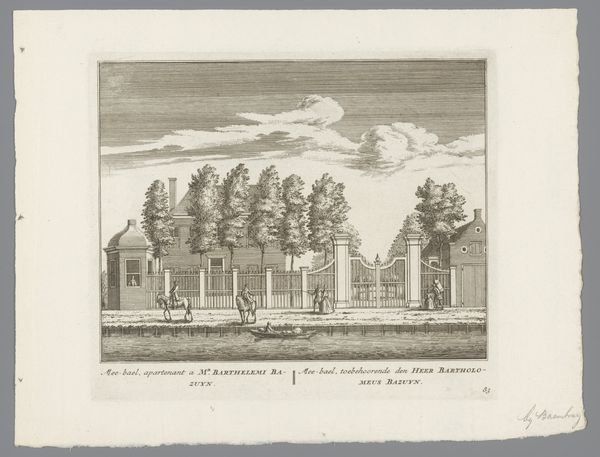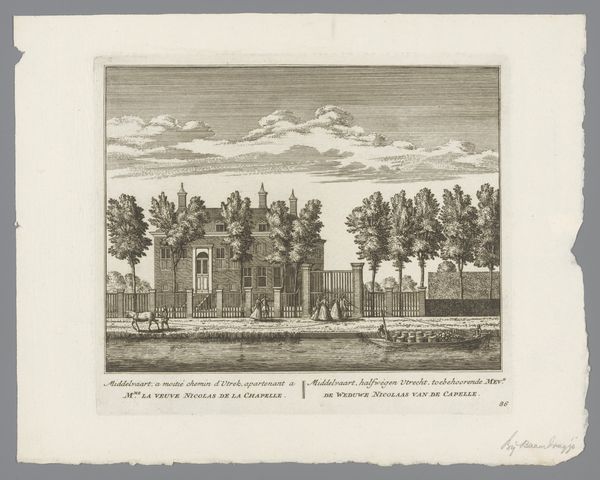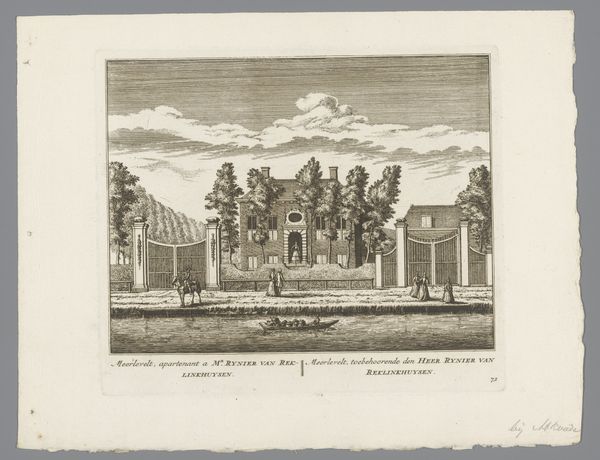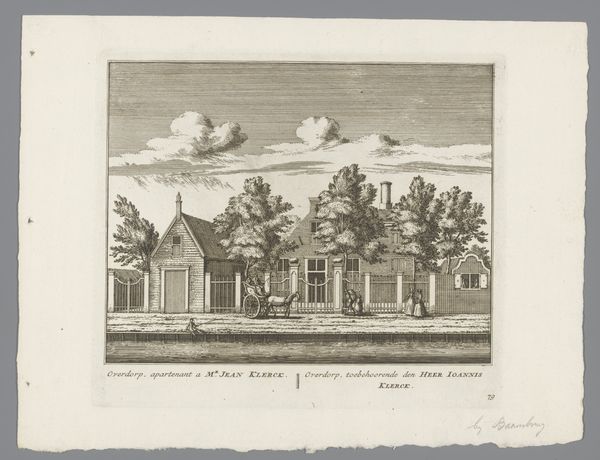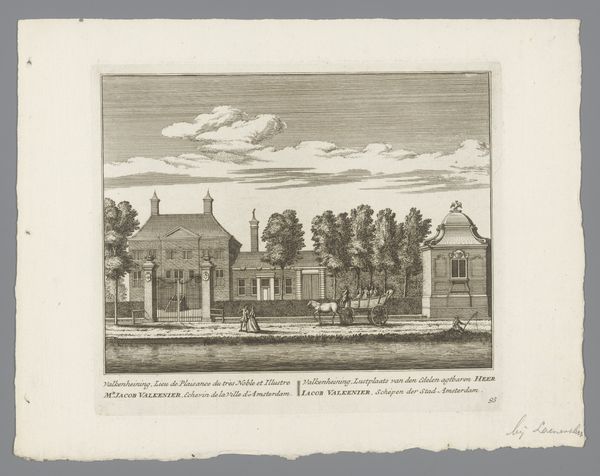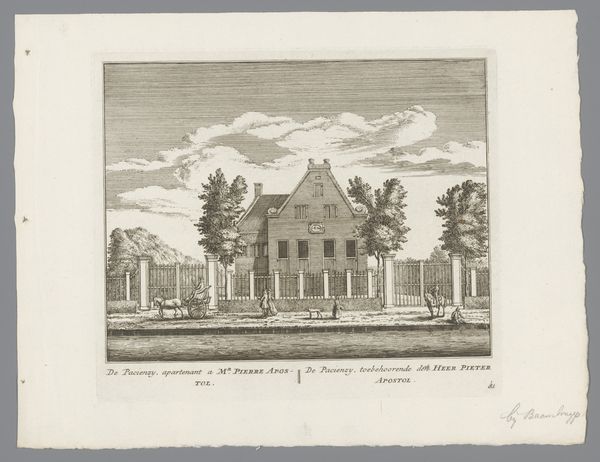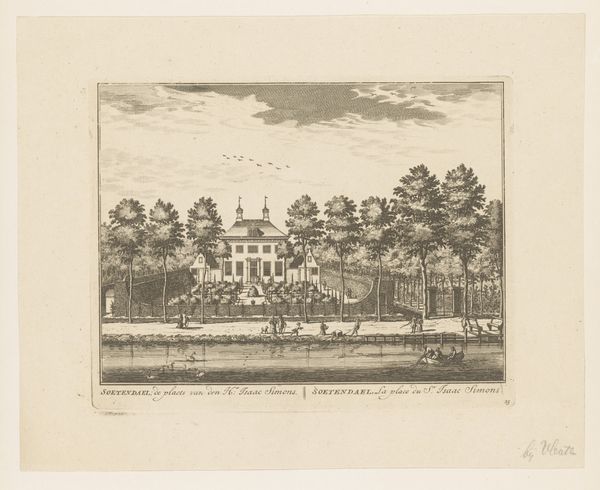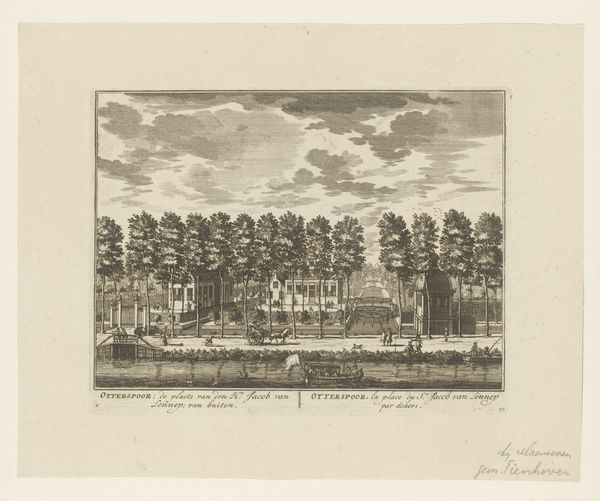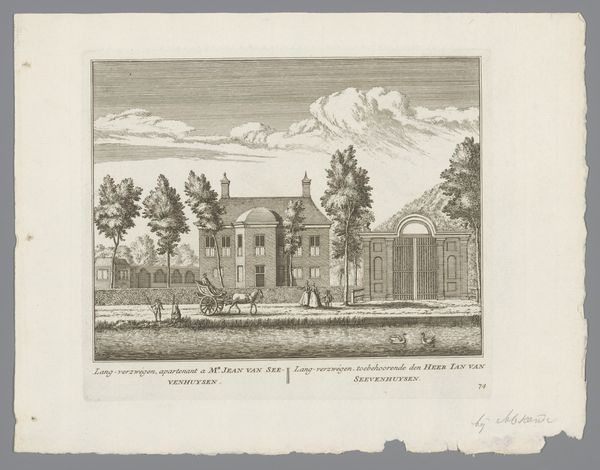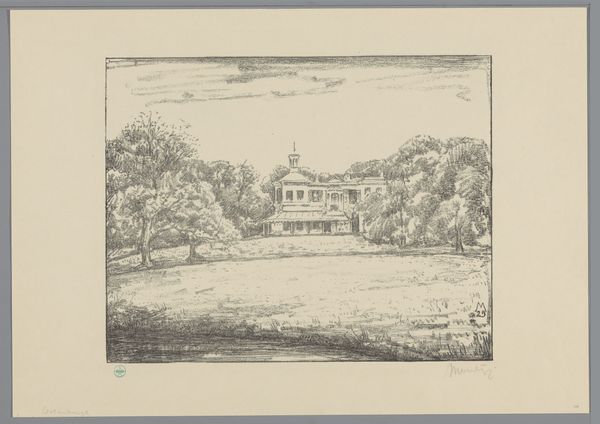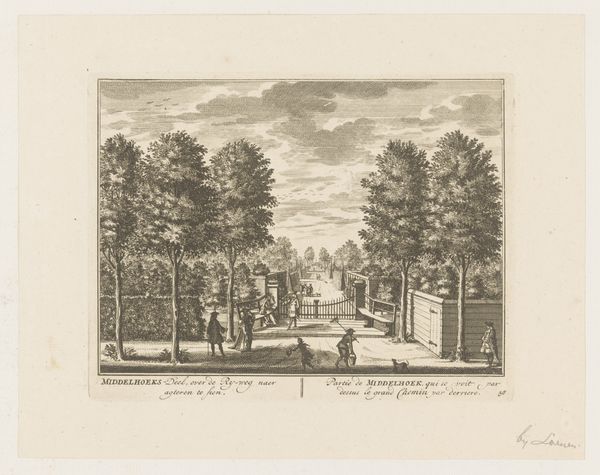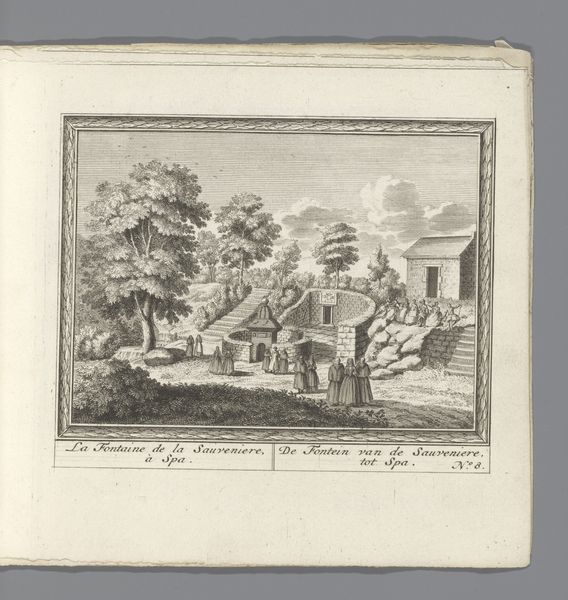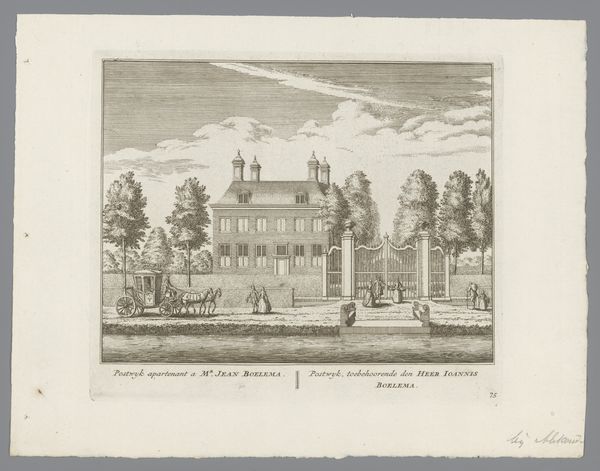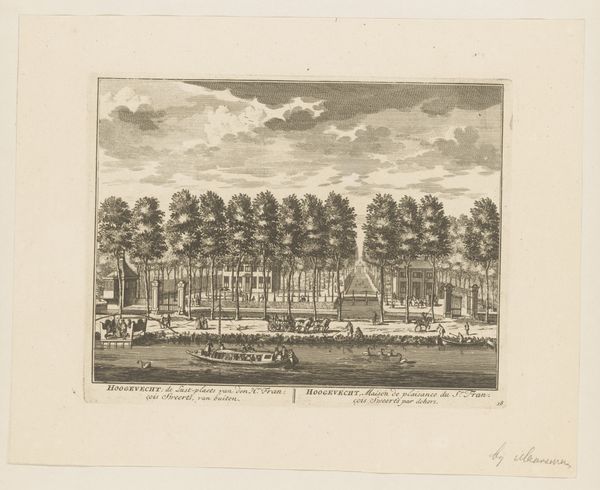
drawing, print, etching
#
drawing
#
dutch-golden-age
# print
#
etching
#
landscape
Dimensions: height 170 mm, width 200 mm
Copyright: Rijks Museum: Open Domain
Abraham Rademaker made this print of the Ruyteveldt estate near Loenersloot in the Netherlands sometime between 1700 and 1735. It offers us a glimpse into the Dutch Golden Age and its complex social hierarchies. The image presents an idyllic scene of leisure and prosperity: figures stroll leisurely, boats glide along the waterway, and the estate stands as a symbol of wealth and status. This carefully constructed image reflects the values of the Dutch elite at the time. The formal garden design is an assertion of man's control over nature, and the estate itself is a statement of economic success. But what does it conceal? The wealth that made such estates possible was often built on international trade and colonialism. Images like this served to reinforce a particular social order and the dominance of the ruling class. To understand the image fully, we must consider the economic and political context in which it was created. Archival research into Dutch trade networks and colonial history could shed more light on the social realities behind this seemingly innocent scene.
Comments
No comments
Be the first to comment and join the conversation on the ultimate creative platform.
